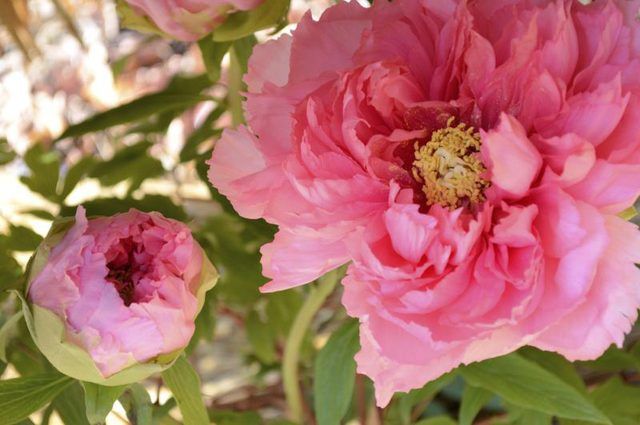Bulbs
Flower Basics
Flower Beds & Specialty Gardens
Flower Garden
Garden Furniture
Garden Gnomes
Garden Seeds
Garden Sheds
Garden Statues
Garden Tools & Supplies
Gardening Basics
Green & Organic
Groundcovers & Vines
Growing Annuals
Growing Basil
Growing Beans
Growing Berries
Growing Blueberries
Growing Cactus
Growing Corn
Growing Cotton
Growing Edibles
Growing Flowers
Growing Garlic
Growing Grapes
Growing Grass
Growing Herbs
Growing Jasmine
Growing Mint
Growing Mushrooms
Orchids
Growing Peanuts
Growing Perennials
Growing Plants
Growing Rosemary
Growing Roses
Growing Strawberries
Growing Sunflowers
Growing Thyme
Growing Tomatoes
Growing Tulips
Growing Vegetables
Herb Basics
Herb Garden
Indoor Growing
Landscaping Basics
Landscaping Patios
Landscaping Plants
Landscaping Shrubs
Landscaping Trees
Landscaping Walks & Pathways
Lawn Basics
Lawn Maintenance
Lawn Mowers
Lawn Ornaments
Lawn Planting
Lawn Tools
Outdoor Growing
Overall Landscape Planning
Pests, Weeds & Problems
Plant Basics
Rock Garden
Rose Garden
Shrubs
Soil
Specialty Gardens
Trees
Vegetable Garden
Yard Maintenance
How to Plant Japanese Tree Peonies
How to Plant Japanese Tree Peonies. Fall is the planting time for bare-root Japanese tree peonies (Paeonia suffruticosa), but specimens growing in containers can be planted in spring or fall. Hardy in U.S. Department of Agriculture plant hardiness zones 4 through 8, Japanese tree peonies are deciduous, woody, long-lived shrubs that feature large...

Fall is the planting time for bare-root Japanese tree peonies (Paeonia suffruticosa), but specimens growing in containers can be planted in spring or fall. Hardy in U.S. Department of Agriculture plant hardiness zones 4 through 8, Japanese tree peonies are deciduous, woody, long-lived shrubs that feature large flowers in vivid colors. Most varieties are slow-growing, and it can take several years for the shrubs to become established.
Planting Times
Planting bare-root Japanese tree peonies in fall allows their roots to become established in their new location before the plants' growth starts in spring. A fall or spring transplanting time is fine for shrubs in containers because their young roots are already established in their potting soil. Bare-root Japanese peonies are usually bought wrapped in straw and burlap or another covering.
Plant bare-root shrubs at least four weeks before your location's annual average first frost date; the soil retains some heat from summer at that time. Plant container shrubs either at the same time in fall or when new growth appears on their stems in spring. Don't plant Japanese tree peonies in frosty conditions or during hot summer weather.
Preparations for Planting
Japanese tree peonies grow best in moist, fertile soil, and applying soil amendments improves the planting site. Coarse sphagnum peat moss, well-rotted manure and rich garden compost are some suitable organic materials for improving soil structure, drainage and moisture retention.
Dig a hole the same depth and twice as wide as the root ball or container of the Japanese peony tree you want to plant in that hole. Mix the organic material with the hole's removed soil at a rate of 1 spadeful of organic material to 3 spadefuls of soil. At the same time, combine 2 tablespoons of superphosphate with the organic material-soil mixture. Superphosphate is a source of phosphorus, which helps plant roots establish.
Planting Depths
As grafted plants, Japanese tree peonies must be planted so that the graft union is 4 to 5 inches below the soil surface. Grafting attaches a hybrid shrub to a root system from a different plant. When the stem of the hybrid plant is under the soil, it develops its own root system and helps the shrub stay true to its original form. The graft unions of Japanese tree peonies in containers are already at the correct level in the containers' potting soil.
Check each bare-root plant for the ridge or change in bark texture that indicates the graft union's location. Hold the plant in its hole so that the graft union is 4 to 5 inches below the soil surface. With your other hand, spread the plant's roots evenly over the base of the hole, and scoop soil to fill the gaps. Containerized shrubs should be removed from their containers before planting. Plant those shrubs at the same soil depth at which they grew in their containers. Lightly firm the soil around bare-root and formerly containerized shrubs with your hands after planting.
After-Planting Care
Water is the most important after-care element for Japanese tree peonies, and fall-planted shrubs benefit from a layer of organic mulch. Immediately after planting, water Japanese tree peony planting sites with water from a garden hose outfitted with a soft-spray attachment. Apply water until it puddles around the shrubs. Don't wash the soil from the stems of bare-root shrubs.
Spread a 2- to 3-inch-thick layer of wood chips, shredded bark, straw, coarse sphagnum peat moss or other coarse organic material over the root zones of fall-planted Japanese tree peonies. The mulch helps keep the soil warm and protects the shrubs' young roots from heavy frosts.
Japanese tree peonies need regular watering while they are in leaf. Apply water when their soil surface is dry to a depth of 1 inch. Don't water so often that the ground becomes soggy, however.